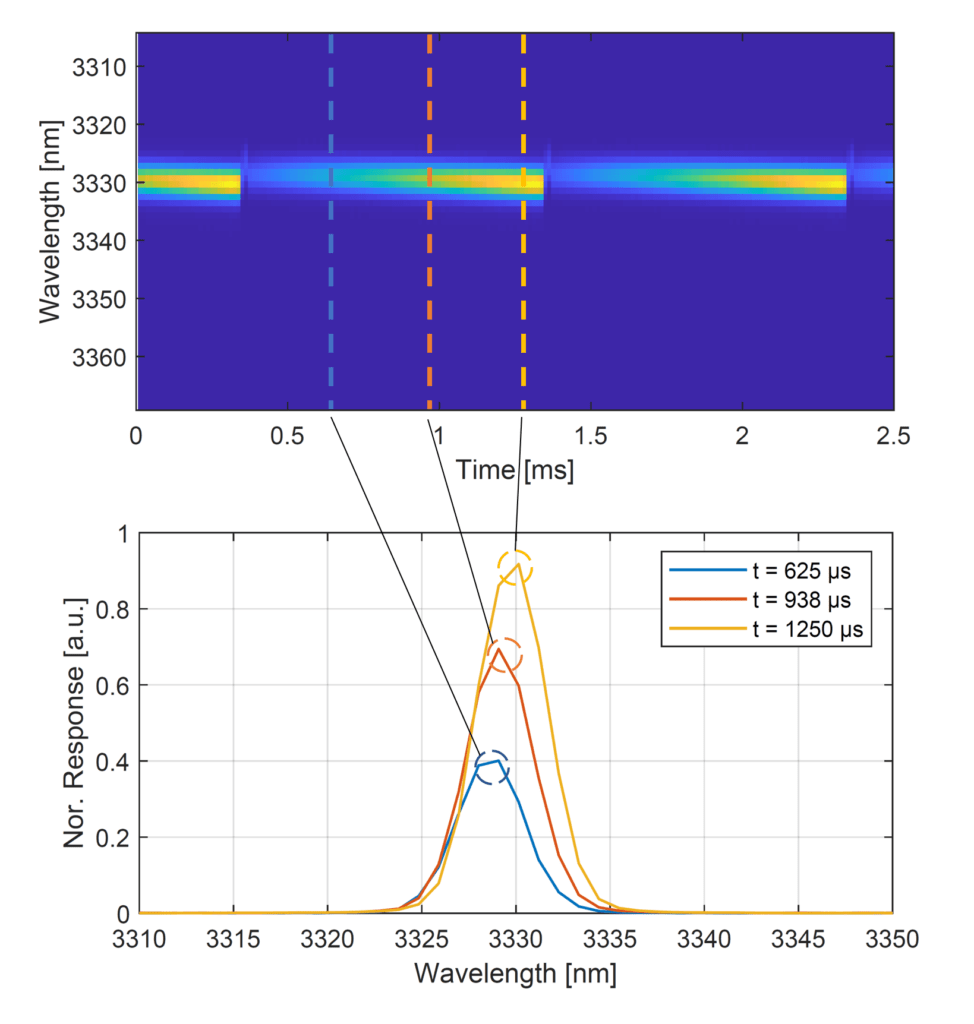Research examples:
Mid-infrared Laser Characterization
Among all the wavelength regions, the mid-infrared spectrum is still relatively unknown to laser scientists. Despite the limited availability of mid-infrared laser sources on the market, many industries benefit from them. Mid-infrared lasers are used primarily for absorption spectroscopy and infrared imaging, but many other applications are also seeing the light of day as higher brightness, better mode quality, and better modulation become available. That has led to extensive research and growth of infrared laser technology in recent years.
Mid-infrared laser technology is a continuously developing field involving a variety of different platforms and materials, such as semiconductor lasers, gas-based lasers, and fibre lasers.
The growth and progress of coherent infrared light sources creates new conditions for laser characterization. To ensure successful progress, equipment specialized for characterizing each device is required. Fast, sensitive, and accurate instruments are required for beam diagnostics, laser pulse characterization, and spectral power density measurements.
NLIR’s mid-IR Spectrometer S2050-130k offers unique insights into both the temporal and spectral domains of the light from a mid-infrared laser. With a bandwidth from 2 µm to 5 µm, full-spectrum readout rate up to 130 kHz, and sensitivity among the very best, many different laser properties can be characterized.
Mid-infrared supercontinuum laser source
As an example, single pulses from a super-continuum laser source with a bandwidth of approx. 3.0 µm – 4.2 µm and a repetition rate of 40 kHz of 2 ns pulses were measured with 80 kHz full-spectrum readout rate and a resolution 4 cm-1.

In Figure 1,
(a) shows raw data of 12 ms data acquisition
(b) shows a zoom where every other readout is empty as expected from 40 kHz repetition rate and 80 kHz sampling
(c) shows 10 consecutive spectra. The fluctuations in the spectra are by far dominated by noise from the light source.
Modulating mid-infrared laser current
In another example, the drive current amplitude of a mid-infrared laser at 3330 nm was modulated linearly at 1 kHz, and the full spectrum of the emitted light was recorded at 80 kHz and a resolution 4 cm-1. Fig. 2 shows how both the amplitude and the center frequency of the laser change under the modulation of the drive current.
This characteristic could only be measured with NLIR’s kHz rate spectrometer.
The above two examples show how the NLIR S2050-130k Spectrometer with its 130 kHz full spectrum readout rate gives unique insights into the mid-IR laser characterization.

